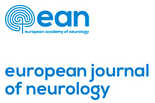 Facioscapulohumeral myopathy (FSH) is characterized by progressive involvement of the muscles of the face and the shoulder girdle, then the muscle of the legs and trunk. FSH1, (95% of cases) due to a decrease in the number of repeats of a D4Z4 sequence, located on chromosome 4, is different from FSH2 (5% of cases), linked mainly to abnormalities in the SMCHD1 gene, located on chromosome 18. In FSH1 as in FSH2, the DUX4 gene is abnormally expressed.
Facioscapulohumeral myopathy (FSH) is characterized by progressive involvement of the muscles of the face and the shoulder girdle, then the muscle of the legs and trunk. FSH1, (95% of cases) due to a decrease in the number of repeats of a D4Z4 sequence, located on chromosome 4, is different from FSH2 (5% of cases), linked mainly to abnormalities in the SMCHD1 gene, located on chromosome 18. In FSH1 as in FSH2, the DUX4 gene is abnormally expressed.
Due to its rarity, FSH2 has been the subject of little study to date.
A European multicenter study of muscle damage by magnetic resonance imaging (MRI) was carried out in 34 patients with FSH2.
The results show that:
- on the trunk: the most affected muscles are the transverse and oblique abdominal muscles (100% of the muscles analyzed);
- in the lower limbs: the most affected muscles are the semi-membranous (94%), the soleus (91%) and the gluteus minimus (87%); the least affected muscles are the ilio-psoas (2%), the popliteus (3%), the obturator internus (6%) and the tibialis posterior (8%);
- at the level of the scapular girdle: the affected muscles are the trapezius (96%), the serratus anterior muscle (85%), the latissimus dorsi (73%) and the pectoralis major (72%); the least affected muscles are the supraspinatus (7%), the infraspinatus (9%), the sternocleidomastoid (9%) and the levator scapulae (9%, 4/46);
- asymmetric involvement was detected in 88% of patients in the lower limbs and in 86% in the shoulder girdle.
While muscle damage is similar in FSH1 and FSH2, it differs in frequency and severity.
This study confirms, in a large group of patients, that the phenotype of FSH2 is similar to that of FSH1. These similarities could be explained by common molecular abnormalities that lead to the abnormal expression of DUX4. The peculiarities of each type of FSH could be due, upstream of this common path, to genetic abnormalities which differ between the two types of FSH.
